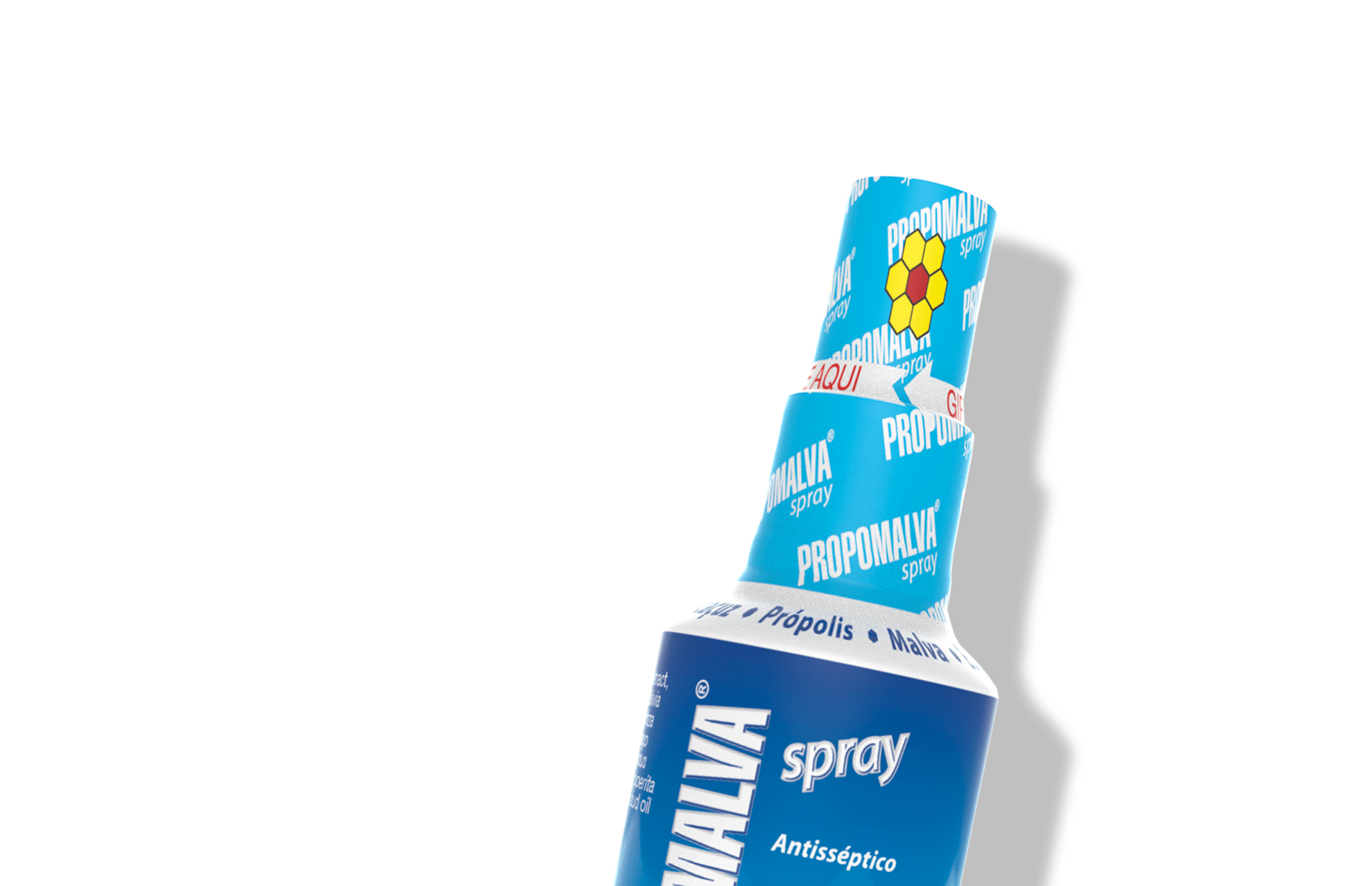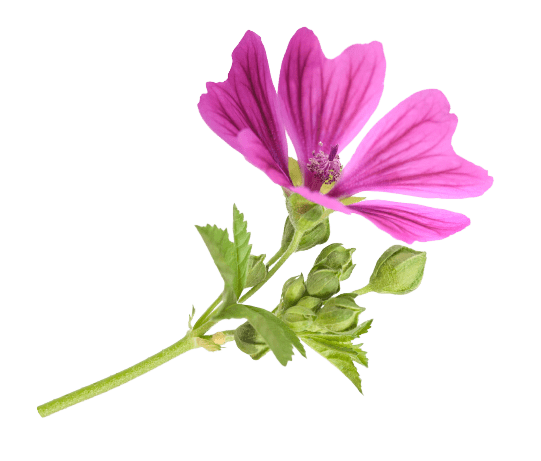Pesquisa

Propomalva® is an antiseptic spray, composed of EPP-AF® standardized propolis extract, mallow (Malva sylvestris) extract, sage (Salvia officinalis) extract, broadleaf plantain (Plantago major) extract, liquorice (Glycyrrhiza glabra) extract, eucalyptus (Eucalyptus globulus) essential oil, peppermint (Mentha piperita) essential oil and clove (Eugenia caryophyllus) essential oil.
The product was developed after extensive research by Apis Flora, effectively combining propolis extract and seven other plant active ingredients for effectiveness proven by tests in renowned research laboratories.
Due to the combination of natural active ingredients with scientifically proven antiseptic, emollient and astringent properties, Propomalva® Spray is effective against the main pathogens of the oral mucosa, such as S. aureus, S. mutans and Candida albicans.
HOW TO USE: Use as necessary, three to four times a day. Shake before use.




Propolis extract, Malva sylvestris extract, Salvia officinalis extract, Glycyrrhiza glabra root extract, Plantago major leaf extract, Eucalyptus globulus leaf oil, Mentha piperita oil, Eugenia caryophyllus bud oil and honey.
IMPORTANT INFORMATION
![]() Avoid contact with eyes. Stop using in case of any sign of hypersensitivity
Avoid contact with eyes. Stop using in case of any sign of hypersensitivity![]() Store in a cool place
Store in a cool place![]() 100%-natural product, with no synthetic preservatives, dyes, or flavorings
100%-natural product, with no synthetic preservatives, dyes, or flavorings

Propolis is a complex blend, formed by resinous and balsamic material collected from plants by Apis mellifera bees, in addition to saliva and enzymes added by the bees themselves.
Several studies have already proven propolis benefits, which include immunomodulatory, anti-inflammatory, antimicrobial, healing, antifungal, antioxidant and hepatoprotective activities.

Mallow (Malva sylvestris) is an herbaceous plant with important healing properties that belongs to the Malvaceae family. It can be found in European meadows and on the edges of cultivated fields. In Brazil, this species needs to be planted, either by seeds, or by seedlings.
The plant is known for its emollient, soothing and anti-inflammatory properties on membranes and mucous membranes.

Liquorice (Glycyrrhiza glabra), also known as regaliz or sweet root, is one of the oldest medicinal plants in the world, being known for its anti-inflammatory and anti-ulcer properties, in addition to having an expectorant action. The glycyrrhizin present in its root is responsible for most of its properties.
To the plant is also attributed to secretolytic, expectorant and anti-spasmodic actions, aiding in the treatment of bronchitis, coughs, sore throat, elimination of catarrh and inflammation in the mouth and throat.

Sage (Salvia officinalis L.) is native to the Middle East and the Mediterranean and is part of the mint family, Lamiaceae.
The plant is known to have pharmacological activities in the body, such as antimicrobial, antiseptic and healing action, being widely used for the healing of mouth wounds and in cases of pharyngitis, stomatitis, and gingivitis.

The broadleaf plantain (Plantago major L.), also known as white man’s footprint, is a medicinal plant belonging to the Plantaginaceae family, being native to the Old World, but also found in Central and South America.
It is known worldwide for its various healing properties, including antibacterial and emollient actions, which can help eliminate respiratory tract mucus and treat oral and pharyngeal mucosal inflammation.

Eucalyptus (Eucalyptus globulus L.) is a plant native to Australia, belonging to the Myrtaceae family and acclimatized to other countries.
Its most important active ingredient is cineole or eucalyptol, but its composition also relies on other substances such as: bitter principles, resins, tannins, phenolic acids (caffeic, ferulic, gallic, gentilic), gums and the like, flavonoids (eucalyptrine, hyperoxide, quercetin and rutin).
It has antiseptic, anti-inflammatory, decongestant, and expectorant actions, thus helping relieve cough and eliminate mucus.

Mentha piperita is a cross hybrid between Mentha aquatica and Mentha spicata. It is a naturalized plant of the same family as the spearmint, and is commonly known for its refreshing qualities. It has antibacterial and antimicrobial properties.
One of its main chemical components is menthol, which can help with respiratory relief as it reduces nasal congestion and fights bronchi inflammation.

Clove (Eugenia caryophyllus) is a plant native to Indonesia. It is very aromatic and widely used for food preparations throughout the world.
Eugenol, derived from the essential oil of the clove is aromatic and widely used in the medical and food areas, presenting activity against several microorganisms, among them, deteriorating fungi. It has also antiseptic and analgesic action, helping clear the nasal cavities due to its anti-inflammatory effect.

Honey is a natural sweet substance produced by bees from floral nectar and sugary secretions from other parts of plants.
It is composed of approximately 75 – 80% carbohydrates, 0.38% proteins, 0.1% acids from fruits and 0.2% minerals. In addition to its nutritional properties, honey provides sedative and emollient effects.

